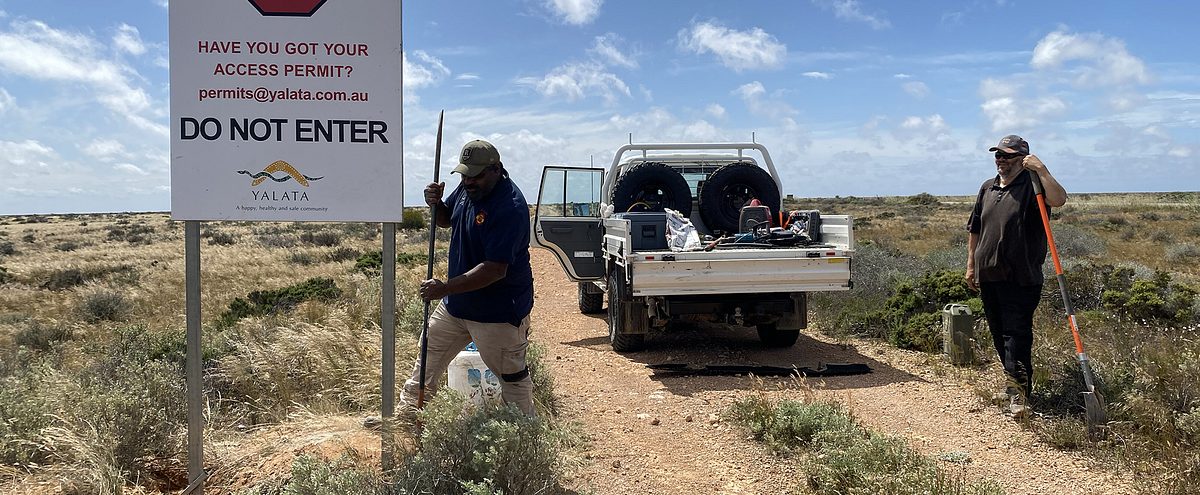
Yalata predator control
Feral predators are a major threat to vulnerable species, especially birds that nest on the ground, such as malleefowl and hooded plovers.
AW is working with the Yalata Anangu Aboriginal Corporation on a trial of 4G-enabled Celium trap technology to target cats and foxes in key habitat for both species in the Yalata Indigenous Protected Area (IPA). Celium traps send a signal to a mobile phone or desktop app when they are triggered, alerting the Yalata Rangers that a trap needs to be checked. This means the rangers don't need to drive long distances just to check traps daily, a big time saving in an area as large and remote as the Yalata IPA.
Staff from AW and Yalata are working together on the planning and delivery of the project.
This project is funded by the South Australian Government's Landscape Priorities Fund (LPF).

The first traps and communication mast were installed on the Yalata coast in May 2025. The sites were selected for their proximity to known hooded plover populations, and trail cameras were installed first to monitor predator activity.

With foxes and cats active in the area, these high-tech traps provide protection for hooded plovers and other wildlife. At first, the new traps were baited to attract cats and foxes, and wired open. Cats and foxes are wary of new things in their territory, and this approach helps avoid creating trap-shy animals.
A Mitchell's hopping mouse also shows up for a look around.